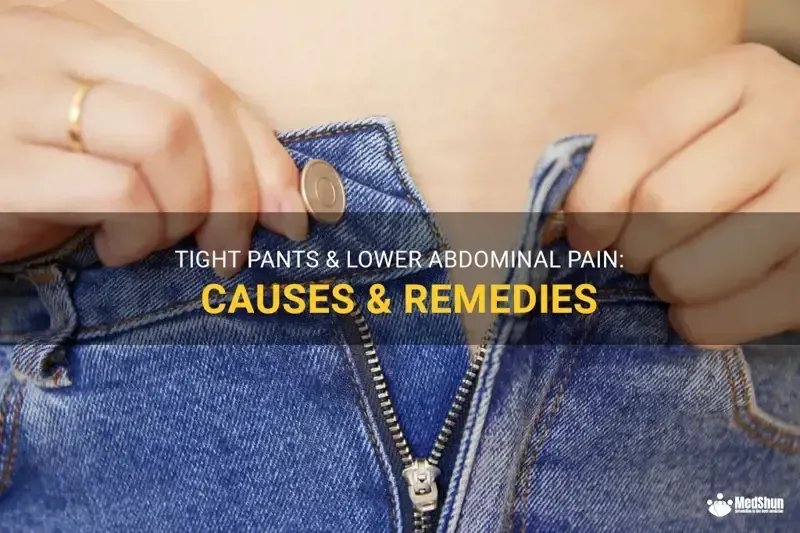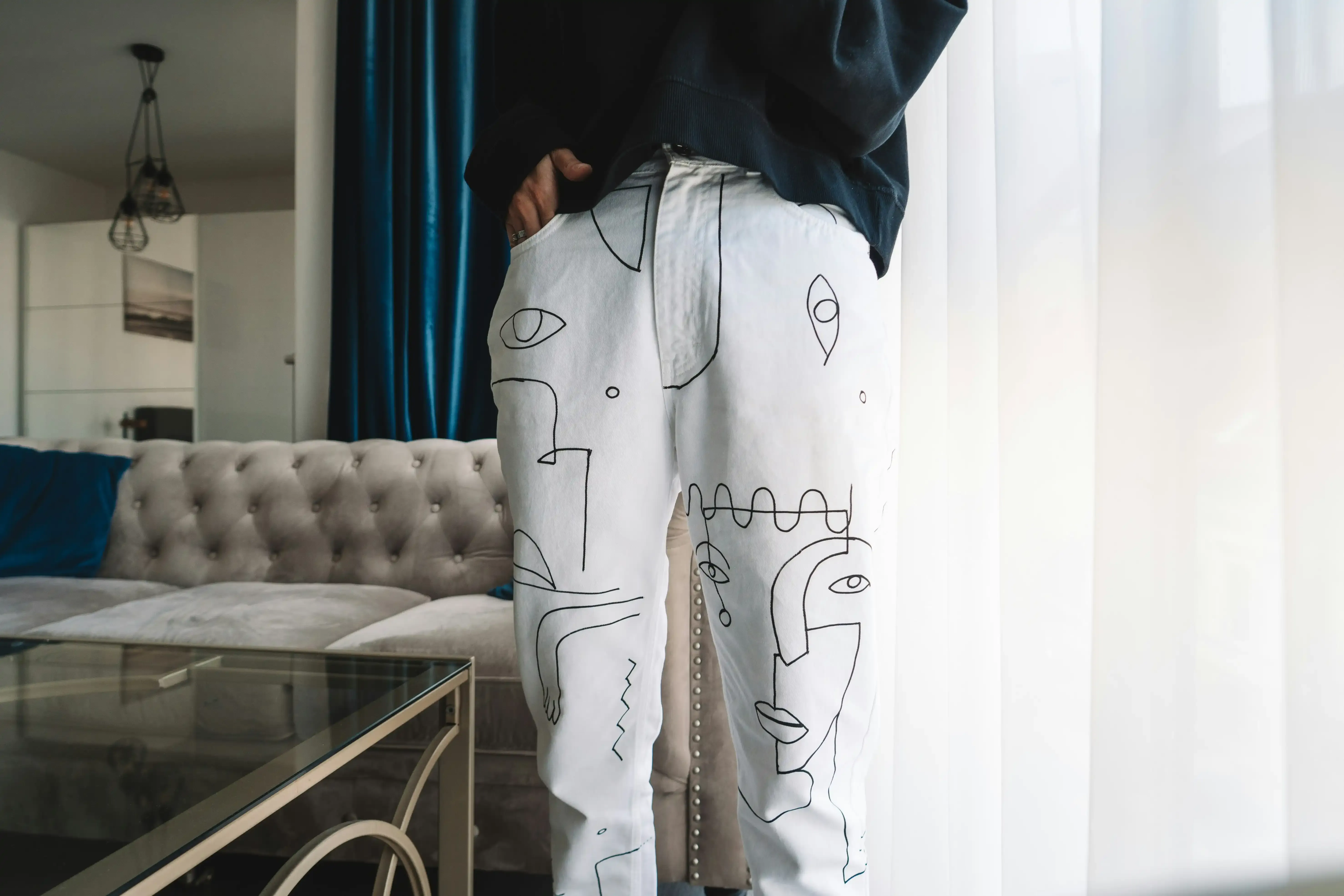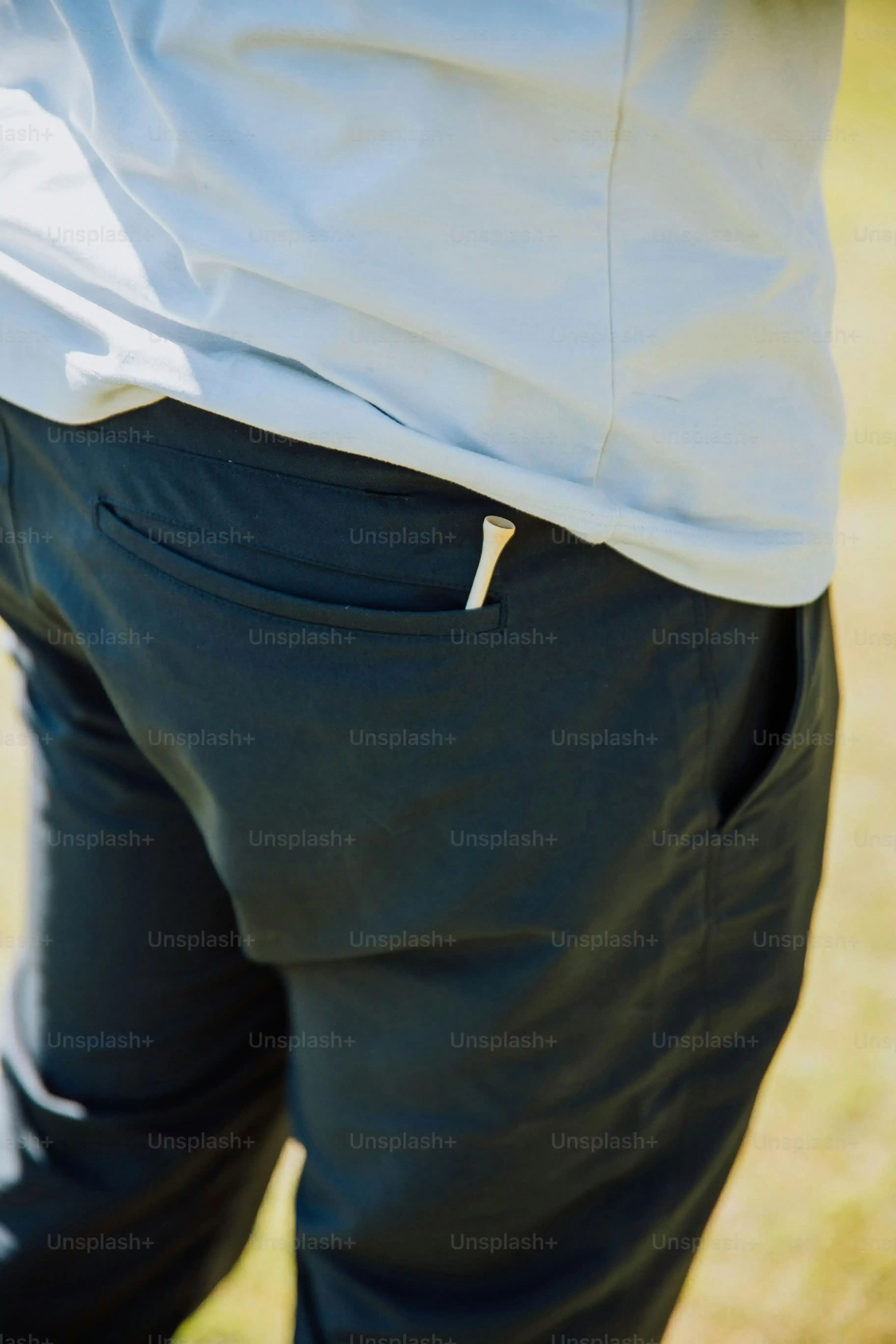Table of Contents
We've all been there. You slide into a pair of jeans, maybe fresh out of the dryer, and suddenly you're playing a game of human compression. It might look good in the mirror for about five seconds, but then the reality sets in: the pinch, the squeeze, the distinct feeling that your lower half is trapped in a denim vise. While the fashion world sometimes dictates a snug fit, ignoring the signals your body sends can lead to a surprising array of issues. We're talking about legitimate tight pants problems, not just a minor inconvenience.
The Everyday Discomfort of Tight Pants Problems

The Everyday Discomfort of Tight Pants Problems
The Immediate Pinch and Squeeze
Let's be real. The most obvious sign you've got tight pants problems? The feeling of being vacuum-sealed into your lower garments. It's that constant pressure, a waistband that feels less like clothing and more like a tourniquet. Sitting down becomes a strategic maneuver to avoid cutting off circulation entirely. Bending over? Forget about it unless you enjoy the sensation of your seams screaming for mercy and your organs rearranging themselves. This isn't just mild discomfort; it's a persistent, low-grade annoyance that follows you everywhere, turning simple actions into minor feats of contortion.
Restricted Movement and General Annoyance
Beyond the static squeeze, tight pants problems manifest in a frustrating lack of mobility. Walking feels stiff, like your legs are encased in cardboard. Taking the stairs requires a conscious effort, each step a reminder that your clothing is actively working against you. It makes you fidget, constantly adjusting, pulling, and tugging in a futile attempt to find a comfortable position that doesn't exist. This constant physical friction and limitation wear on you throughout the day, turning a simple outfit choice into a source of unnecessary stress.
Common Everyday Tight Pants Issues:
- Waistband digging into your stomach or hips.
- Feeling constricted when sitting or bending.
- Difficulty taking full strides while walking.
- Constant need to readjust or pull at your pants.
- Fabric bunching or pulling in awkward places.
- A general feeling of being 'stuck' in your clothes.
Beyond the Squeeze: Serious Health Risks from Tight Pants Problems

Beyond the Squeeze: Serious Health Risks from Tight Pants Problems
Uncomfortable Truths About Tight Fits
Alright, so you've felt the immediate discomfort – the whole "can't breathe, can't bend" scenario. But let's get into the stuff that's a little more concerning, the real Beyond the Squeeze: Serious Health Risks from Tight Pants Problems. We're not just talking about a temporary muffin top here. Wearing clothes that constantly compress your body can mess with your circulation, which is kind of important for, you know, staying alive and having your limbs function properly. Think about it: that constant pressure isn't letting blood flow as freely as it should. This can lead to things like numbness, tingling, or even swollen ankles at the end of the day. It's like you're giving your veins a workout they really didn't ask for, and not in a good way.
Skin Deep: Irritation and Infections Caused by Tight Pants
so we've covered the squeeze and the circulation issues. Now let's talk about what happens right there on the surface, the literal Skin Deep: Irritation and Infections Caused by Tight Pants. When fabric is constantly rubbing against your skin, especially in areas that get warm and maybe a little sweaty, you're basically creating a perfect storm for irritation. We're talking chafing, redness, and that general uncomfortable itchiness that makes you want to do a public wiggle dance. This constant friction can break down the skin barrier, making it easier for bacteria and fungi to set up shop, leading to things like folliculitis (those annoying little red bumps) or even yeast infections, particularly in sensitive areas. It's not just about looking good; it's about preventing your skin from staging a full-blown revolt.
Tight Pants Problems for Him and Her: Different Fits, Different Woes

Tight Pants Problems for Him and Her: Different Fits, Different Woes
When Men's Trousers Get Too Close for Comfort
Let's talk about the guys for a second. While the general squeeze is universal, tight pants problems for men often hit... well, below the belt, quite literally. Overly snug trousers, especially around the groin area, aren't just uncomfortable; they can lead to some specific issues. We're talking about restricted blood flow, which can be linked to discomfort and potentially affect things like sperm count over time – though studies on this are still evolving, the principle of heat and compression isn't exactly a friend to male reproductive health. Beyond that, the constant friction can cause chafing and irritation in sensitive areas, making every step a reminder of your poor wardrobe choice. It's not just about vanity; it's about giving your anatomy the space it needs to function without complaint.
The Female Perspective on Constricting Clothing
For women, tight pants problems often manifest differently, though no less annoyingly. The classic issues include waistbands digging into the abdomen, creating that lovely "muffin top" effect that spills over and makes sitting a chore. Compression around the hips and thighs can restrict movement and contribute to circulation issues, leading to swelling or discomfort in the legs. But a significant concern is the increased risk of vaginal yeast infections and urinary tract infections (UTIs). Tight, non-breathable fabrics create a warm, moist environment down there – exactly the kind of place fungi and bacteria love to party. It's a prime example of how fashion choices can directly impact intimate health.
Common Tight Pants Complaints by Gender:
- Men: Testicular discomfort, reduced circulation in the groin, chafing.
- Women: Increased risk of yeast infections/UTIs, abdominal digging, hip/thigh restriction.
- Both: Restricted movement, skin irritation, poor circulation in legs, general discomfort.
Shared Struggles and Specific Styles
Despite the gender-specific hot spots, some tight pants problems are universal. Skinny jeans, regardless of who wears them, can cause nerve compression – specifically, a condition called meralgia paresthetica, where the nerve running down your thigh gets squeezed, leading to numbness, tingling, and pain. It's often nicknamed "skinny pant syndrome." Tight waistbands on any style can worsen digestive issues like bloating or heartburn by putting pressure on your stomach and intestines. So, while the exact geography of the discomfort might shift, the core problem remains: clothing that's too tight is actively working against your body's well-being, proving that sometimes, comfort needs to trump clinging fabric.
Ditching the Pinch: How to Avoid Tight Pants Problems

Ditching the Pinch: How to Avoid Tight Pants Problems
Choosing the Right Fit From the Start
Avoiding tight pants problems often begins before you even leave the dressing room. It sounds simple, right? Just pick a size that fits. But with vanity sizing and different cuts, that's easier said than done. The key is to ignore the number on the tag and pay attention to how the garment feels on your body. Can you sit down comfortably without feeling like the seams are going to burst? Can you walk without restriction? If you have to lie down to zip them up, or if the waistband leaves angry red marks, they're too tight. Period. Don't talk yourself into it because they're "supposed" to stretch or because you hope to fit into them later. Buy clothes that fit the body you have right now to sidestep those irritating tight pants problems.
Fabric Matters and Listening to Your Body
Beyond size, the fabric plays a huge role in preventing tight pants problems. Stiff, non-stretch materials offer zero forgiveness and will highlight any tightness immediately. Look for fabrics with a bit of give, like denim with elastane or trousers made from blends that allow for movement. Breathability is also crucial, especially when considering the skin irritation issues we discussed earlier. Cotton, linen, and certain performance blends allow air circulation, reducing moisture buildup. Most importantly, listen to your body. If a pair of pants feels uncomfortable after an hour, it's probably going to feel worse as the day goes on. Don't power through the discomfort; that's your body telling you these pants are causing tight pants problems you should probably avoid.
Tips for Avoiding the Squeeze:
- Prioritize comfort over the tag size.
- Perform a "sit test" and "walk test" in the fitting room.
- Opt for fabrics with some stretch or natural give.
- Choose breathable materials to prevent skin irritation.
- Don't buy pants hoping you'll shrink into them.
- Pay attention to how your body feels throughout the day.
- Consider alternative styles like straight leg or bootcut if skinny fits are always problematic.
The Final Word on the Squeeze
So, we've established that tight pants problems are more than just a minor fashion faux pas. They're a legitimate source of discomfort and, in some cases, can contribute to actual physical ailments, from nerve compression to skin infections. The allure of a super-slim silhouette might be tempting, but the reality involves restricted circulation, potential digestive woes, and a general feeling of being vacuum-sealed. Choosing clothing that allows your body to move and breathe freely isn't a surrender to shapelessness; it's a practical decision for your well-being. Pay attention to how your clothes feel, not just how they look. Your body will likely thank you for ditching the pinch.
